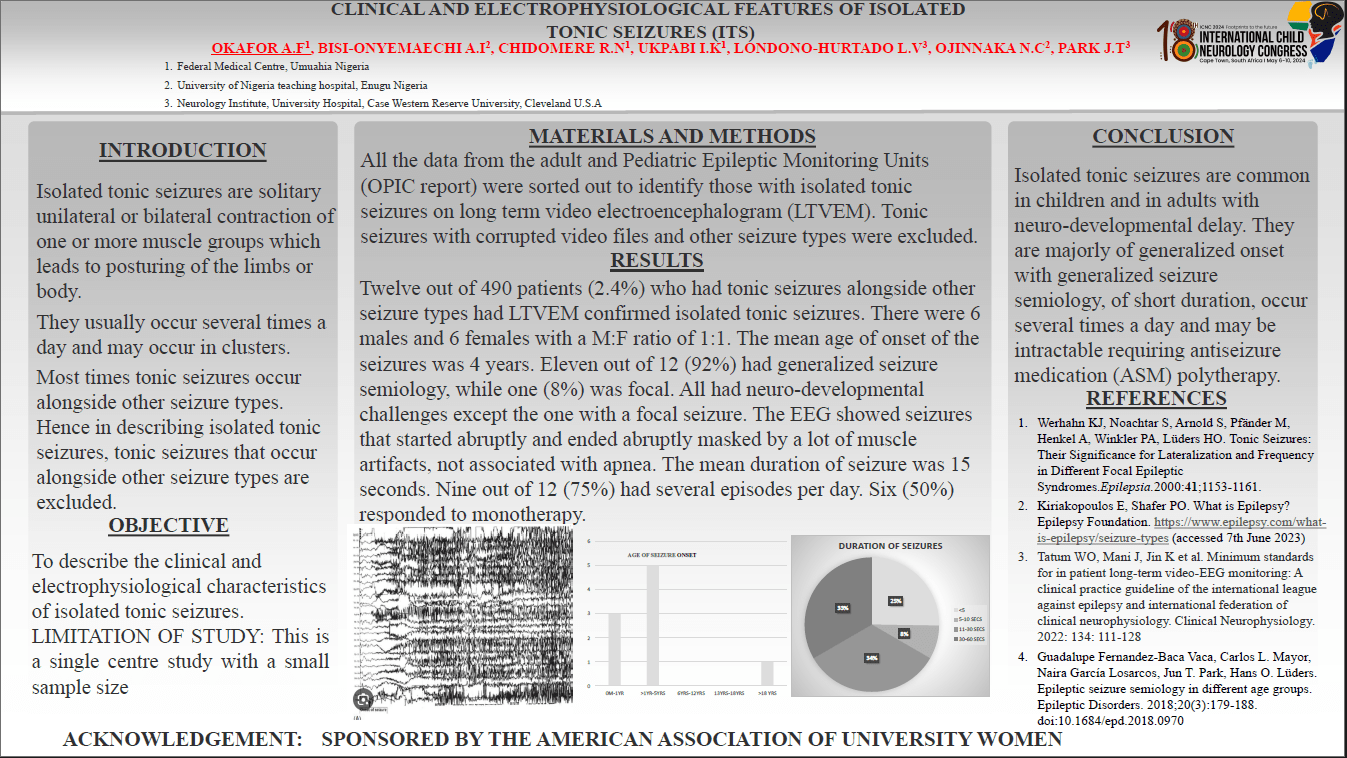Clinical And Electrophysiological Features Of Isolated Tonic Seizures
Isolated tonic seizures are solitary unilateral or bilateral contraction of one or more muscle groups which leads to posturing of the limbs or body and devoid of other seizure types. AIM To characterize the clinical and electrophysiological features of isolated tonic seizures. METHODS Data from the adult and Pediatric Epileptic Monitoring Unit (OPIC report) were sorted out to identify those with isolated tonic seizures on long term video electroencephalogram monitoring (LTVEM). RESULTS Out of 470 cases with tonic seizures alongside other seizure types, 12 had isolated tonic seizures on LTVEM (6 males and 6 females) with a M:F ratio of 1:1. There were six adults and six children, however nine were children at the time of onset of the seizures, while two had unknown age of onset of the seizures (live in a group home) and one developed seizures as an adult . The mean age of onset of the seizures was 4 years. All the adults had developmental challenges. Eleven out of 12 (92%) had generalized seizure semiology, while one (8%) was focal. The EEG seizures started abruptly and ended abruptly. The mean duration of seizure was 15 seconds. Nine out of 12 (75%) had several episodes per day. CONCLUSION Isolated tonic seizures are commoner in children and adults with developmental challenges. They are majorly of generalized onset with generalized seizure semiology, short duration, occurring several times a day. SPONSORSHIP BY: THE AMERICAN ASSOCIATION OF UNIVERSITY WOMEN (AAUW)
Amarachukwu Okafor
Federal Medical Centre Umuahia
Nigeria
Adaobi Bisi-Onyemaechi
University of Nigeria Teaching Hospital
Nigeria
Roseann Chidomere
Federal Medical Centre
Nigeria
IHUOMA UKPABI
Federal Medical Centre
Nigeria
Luisa Londono-Hurtado
University Hospital
United States
NGOZI OJINNAKA
University of Nigeria Teaching Hospital
Nigeria
Jun Park
Neurology Institute, University Hospital
United States
